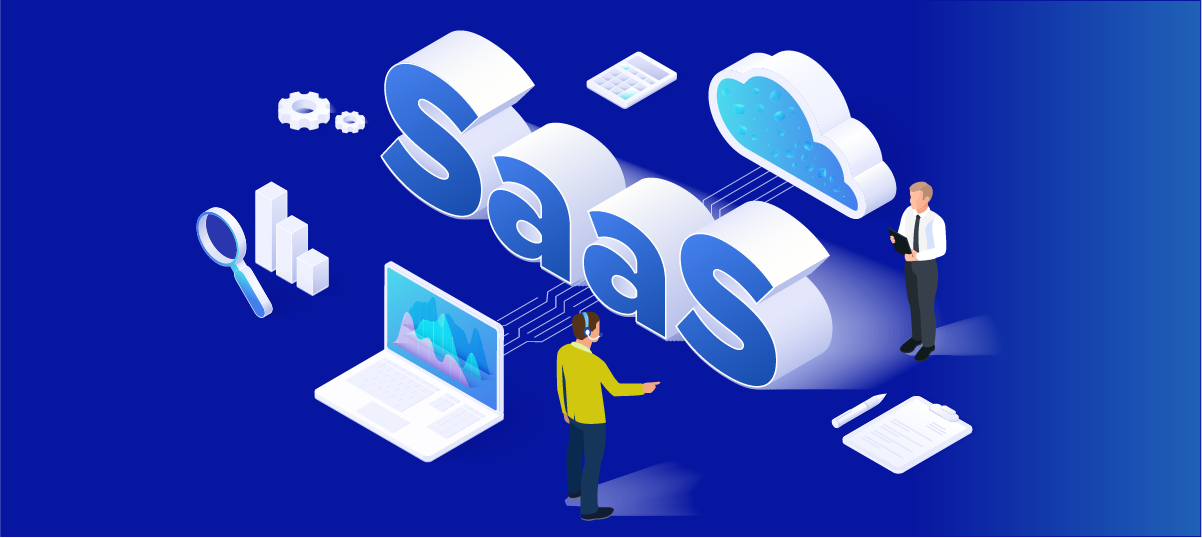Goals of SaaS (software as a service) Management

Enterprises of all shapes and sizes are increasingly attracted to SaaS solutions today because of unforeseen remote work scenarios and businesses’ transition to digital environments. However, there is no doubt that the recent decade witnessed a considerable boom in the SaaS industry.
On the other hand, the massive reliance on SaaS applications imposes various unexpected challenges to organizations.
- Security risks and SaaS costs spiralling out of control are some of those issues.
- SaaS challenges can be effectively overruled by engaging in proper SaaS management practices.
- SaaS management can also be carried out by employing a good SaaS management platform.
- SaaS management is the practice of monitoring and managing an organization’s SaaS apps to reduce costs and security risks.
- By increasing the value of SaaS services and the efficacy of people who use them, SaaS management proves to be the most efficient solution to all your SaaS problems.
- Best SaaS management practice includes purchasing, licensing, renewing, auditing, and everything else related to SaaS in an organization.
SaaS management aims to help organizations adapt to cloud computing and manage a large stack of SaaS apps.
Goals of SaaS Management

Visibility
One of the main objectives of SaaS management is to gain complete visibility into the SaaS stack. Due to their ease of acquiring, new SaaS apps may appear in your SaaS stack each week. However, it is difficult for IT teams to track who uses what, when, and how. Shadow IT is the term for this phenomenon. This occurs when a business unit or an individual purchases software without the knowledge of the IT department. As a result, shadow IT is associated with hidden costs and security risks.
A good SaaS management platform aims to get the big picture of an organization’s SaaS stack. With the discovery of Shadow IT and all the apps underuse in the organization, the IT department can better understand their SaaS environment. The insights can further help in future decision-making regarding SaaS, ultimately leading to mitigating security threats and reducing expenses for the enterprise.
SaaS System of Record
The next goal of SaaS management is to bring together a SaaS system of record for the organization. A SaaS system of record includes details of all SaaS applications in use within the organization. It will also contain details of SaaS buyers in the business, cost centers, and renewal dates for each application.
Using a SaaS record system has the overall goal of reducing the risk of unmanaged tools or technologies.
Collaboration
The best SaaS management platform combines the various business units and IT departments. The goal of SaaS management is to facilitate collaboration by obtaining department-specific usage reports. So that the IT department can understand how different teams utilize SaaS apps to meet unique business requirements.
Collaboration guarantees proper implementation and training of SaaS tools. Communicating the goals of IT with business units can also ensure the continued adoption of approved technology, ensuring that SaaS adoption is in alignment with enterprise strategies.
Increase Value
SaaS management platforms aim to enhance the value of SaaS apps. SaaS management platforms can eliminate redundant apps and overlapping functionalities supported by the system of record and collaboration possibilities.
The best SaaS management platform can ensure that employees across various units use the same application for specific functionality. Utilizing the same tool across several teams allows easy collaboration between different business units. This minimizes complexity and enhances the value of the application as well.
Controlling Expenditure
One of the major goals of SaaS management is to maintain SaaS spending within the budget. A good SaaS management platform effectively does so by continually discovering cost containment opportunities.
IT leaders can detect multi-source spend, redundant applications, and underutilized applications with a solid SaaS management platform. Furthermore, one can use these insights to control expenses and increase value throughout the technology stack.
SaaS Management Enhances Productivity
SMP aim to remove a large clutter of actions for the enterprise by automating a number of tasks. IT professionals are relieved from the huge burden of mundane tasks like tracking and auditing the SaaS apps regularly. This allows employees to spend their valuable time on more important tasks.
Further, SaaS management platforms help increase the productivity of IT leaders by bringing all the apps together under the same platform. Centralized management of all SaaS applications aids IT professionals in saving time and effort.
Cultivating new SaaS Management Practices
The overall goal of SaaS management is to cultivate good SaaS management practices. The best SaaS management practice begins at the user level.
Employing a good SaaS management software can trigger user-level SaaS management practices. Since all SaaS activities can be monitored in a single window, the IT department would not have to manage every individual SaaS requirement. Instead, IT leaders can empower business units to thoroughly research, purchase, implement, and manage SaaS applications.
Some of the practices SaaS management aims to cultivate are;
- The continual discovery of the SaaS stack to eliminate shadow IT and redundant apps.
- Managing calendar for accurate SaaS renewals.
- Maintaining adequate processes to purchase and implement new SaaS tools.
- Tracking usage and controlling access to sensitive data to mitigate risks.
Conclusion
The goals of SaaS management revolve around the security of the enterprise, productivity of the employees, and extracting the maximum out of the SaaS tools. Altogether, SaaS management aims to develop appropriate measures for the enterprise to monitor and manage the complete SaaS stack. Meanwhile, a good SaaS management platform can increase the value of SaaS tools and those who use them. An adequate SaaS management platform provides an enterprise with the most convenient, secure, and effective method to monitor and manage its SaaS stack.

Leave A Comment